02:43
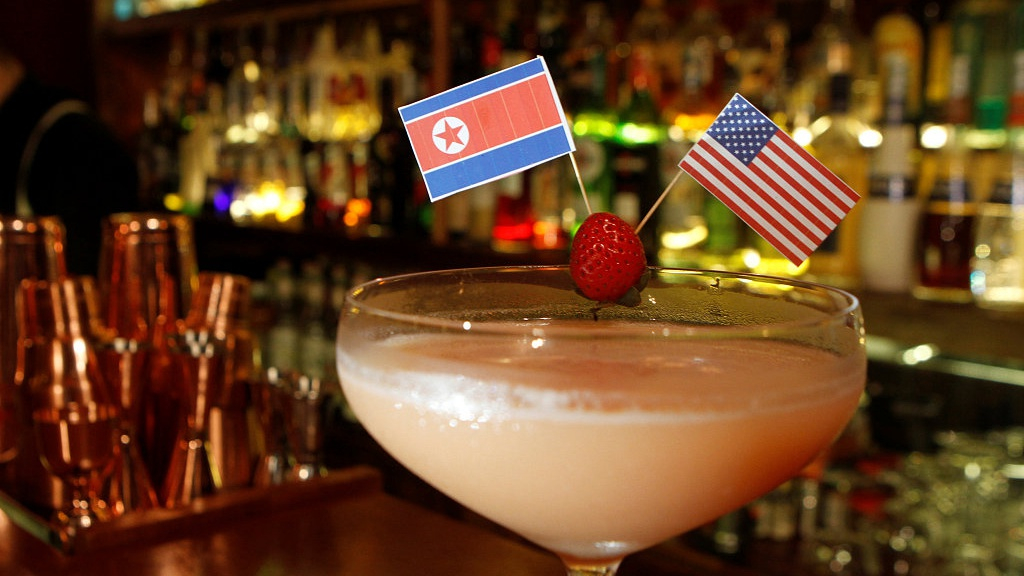
The same leaders, but different venues, travel plans and expectations – U.S. President Donald Trump and Democratic People's Republic of Korea (DPRK) leader Kim Jong Un are going to meet for the second time in eight months.
How is the Hanoi summit, scheduled for February 27-28, different from the Singapore meeting that took place on June 12 last year?
Announcement
Singapore summit:
On May 10, 2018, Trump tweeted that he will meet Kim in Singapore on June 12. Trump's announcement came hours after he welcomed home three American detainees released by Pyongyang.
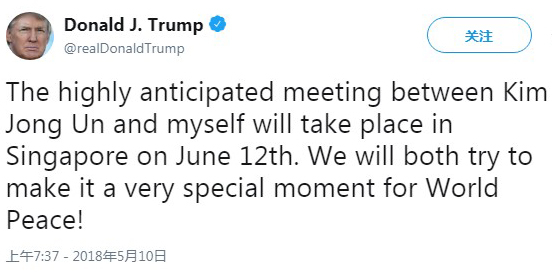
U.S. President Donald Trump announces his first summit with DPRK leader Kim Jong Un on Twitter, May 10, 2018.
U.S. President Donald Trump announces his first summit with DPRK leader Kim Jong Un on Twitter, May 10, 2018.
Hanoi summit:
During his annual State of the Union address on February 5, 2019, Trump announced that his
second summit with the DPRK leader will take place in Vietnam on February 27-28. Three days later, he tweeted that Hanoi will be the host city.
Read more:
Background
Singapore summit:
The Singapore summit was the first-ever meeting between a sitting U.S. president and a DPRK top leader. It happened as a result of the de-escalation of tensions on the Korean Peninsula since the beginning of 2018.
In his 2018 New Year address, Kim extended an olive branch to Seoul, proposing talks for sending a delegation to the PyeongChang Winter Olympics in the Republic of Korea (ROK). The following months saw further rapprochement between Pyongyang and Seoul, leading to two summits between Kim and ROK President Moon Jae-in in April and May of 2018.
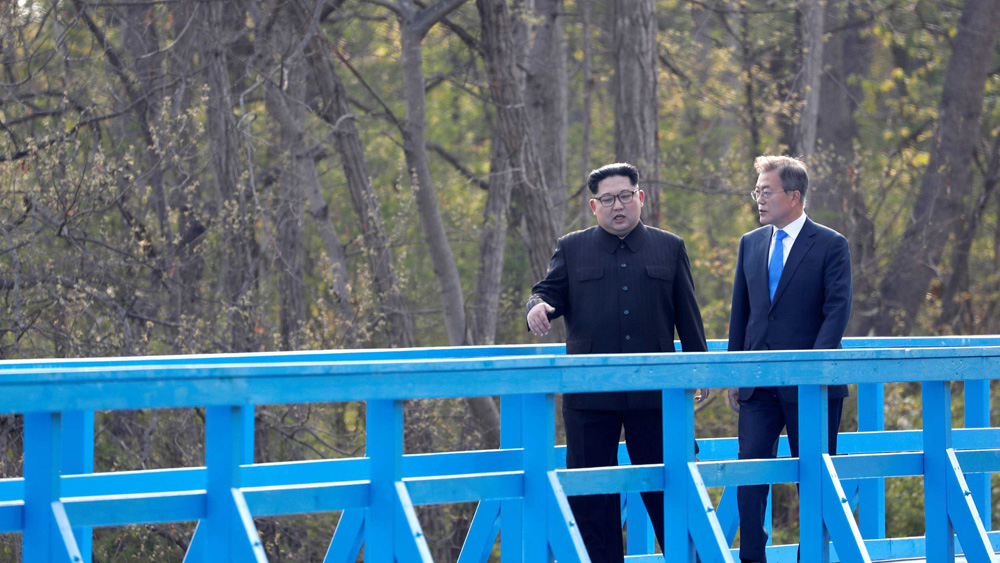
DPRK leader Kim Jong Un (L) and ROK President Moon Jae-in walk together on a bridge at the truce village of Panmunjom, April 27, 2018. /Reuters Photo
DPRK leader Kim Jong Un (L) and ROK President Moon Jae-in walk together on a bridge at the truce village of Panmunjom, April 27, 2018. /Reuters Photo
Read more:
The DPRK leader also visited China in March and May of 2018 and met with Chinese President Xi Jinping. Kim reaffirmed Pyongyang's commitment to the denuclearization of the peninsula, urging Seoul and Washington to respond to its efforts "with goodwill."
Meanwhile, U.S.-DPRK tensions began to thaw. Talks between senior U.S. and DPRK officials took place to arrange a Trump-Kim summit. Though, Trump at one point
canceled the summit, but eventually the two sides agreed to meet as planned.
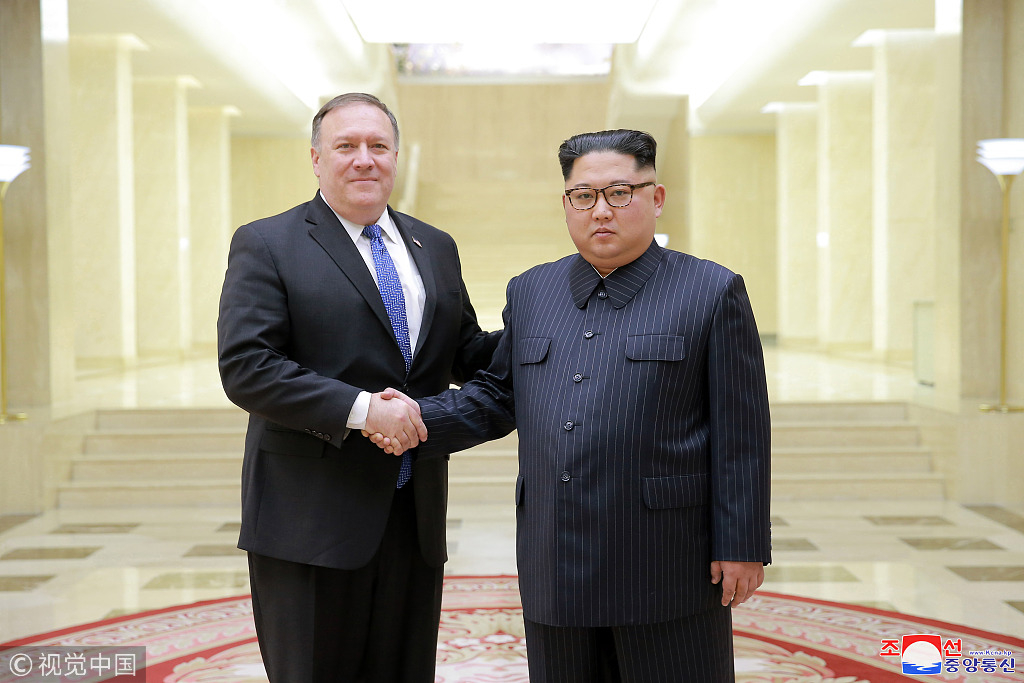
DPRK leader Kim Jong Un (R) meets with U.S. Secretary of State Mike Pompeo in Pyongyang, DPRK, May 9, 2018. /VCG Photo
DPRK leader Kim Jong Un (R) meets with U.S. Secretary of State Mike Pompeo in Pyongyang, DPRK, May 9, 2018. /VCG Photo
Hanoi summit:
At the Singapore summit, Washington and Pyongyang agreed to denuclearize the Korean Peninsula and improve bilateral ties. However, talks on how to implement the agreement have hit an impasse.
However, Pompeo eventually visited Pyongyang in October, where he and Kim agreed to hold a second summit between Trump and the DPRK leader. Both sides hope another summit could break the deadlock.
On the other hand, top-level interactions between Pyongyang and Seoul, and Pyongyang and Beijing continued.
In September, Moon
visited Pyongyang and met with Kim for the third time.
Under the Pyongyang Declaration signed by the two leaders, the DPRK said it is willing to take additional steps for denuclearization if the U.S. takes corresponding actions.
In January 2019, the DPRK leader
paid his fourth visit to China. Xi told Kim that China supports the DPRK's continued adherence toward the direction of denuclearization of the peninsula, supports the continuous improvement of inter-Korean ties, supports the DPRK and the U.S. holding summits and achieving results, and supports relevant parties resolving their respective legitimate concerns through dialogue.
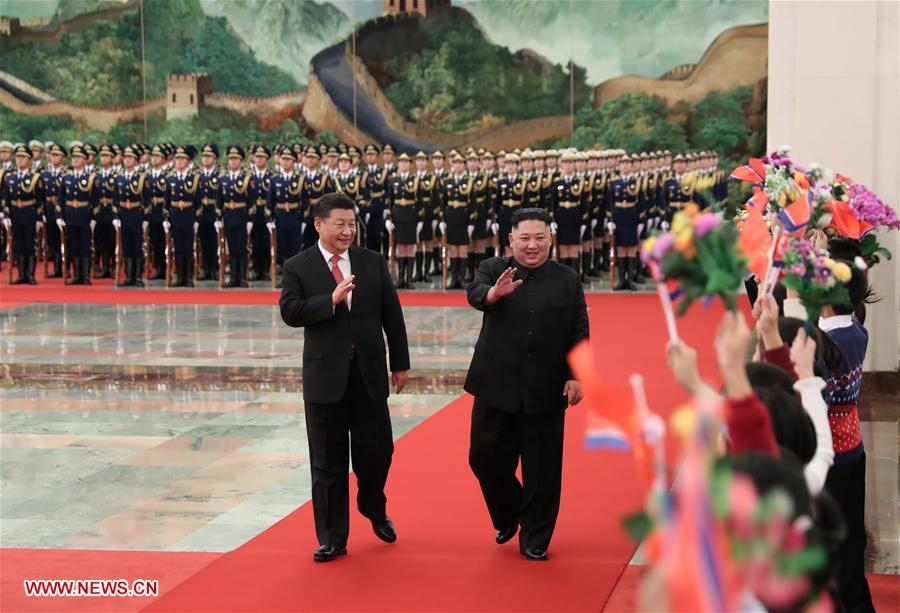
Chinese President Xi Jinping (L), also general secretary of the Communist Party of China Central Committee, holds a welcome ceremony for DPRK leader Kim Jong Un in Beijing, January 8, 2019. /Xinhua Photo
Chinese President Xi Jinping (L), also general secretary of the Communist Party of China Central Committee, holds a welcome ceremony for DPRK leader Kim Jong Un in Beijing, January 8, 2019. /Xinhua Photo
Read more:
Arrivals and pre-summit activities
Singapore summit:
Trump left the 44th G7 summit in Canada early and departed directly for Singapore. He landed at Singapore's Paya Lebar Airbase on June 10, 2018.
Kim flew from Pyongyang to Singapore on a Boeing 747 operated by Air China. He landed at Singapore's Changi Airport on June 10, 2018, several hours before Trump's arrival.
Kim visited some of Singapore's famous tourist attractions, including the Flower Dome at Gardens by the Bay, Jubilee Bridge, and Marina Bay Sands integrated resorts.

U.S. President Donald Trump arrives at Paya Lebar Air Base in Singapore, June 10, 2018. /VCG Photo
U.S. President Donald Trump arrives at Paya Lebar Air Base in Singapore, June 10, 2018. /VCG Photo
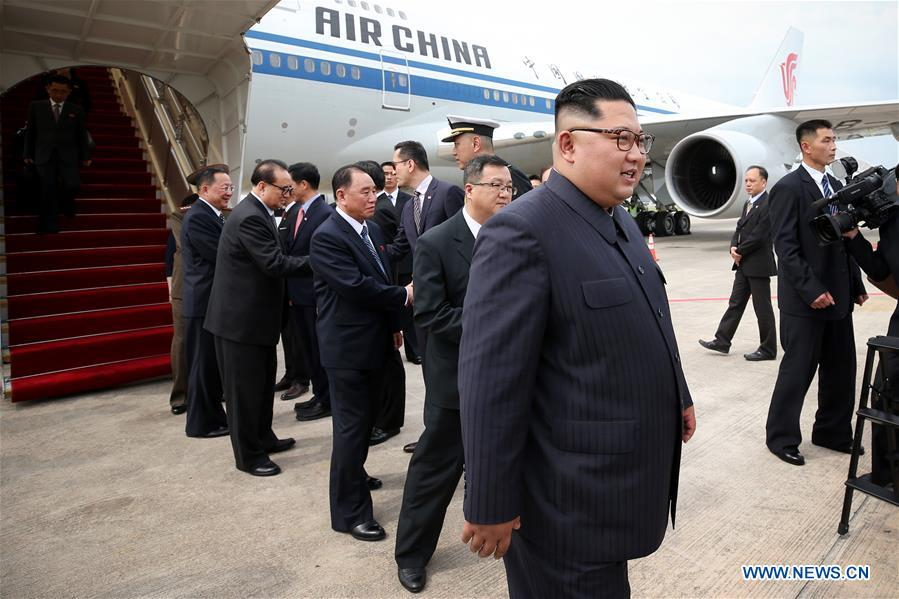
DPRK leader Kim Jong Un arrives in Singapore, June 10, 2018. /Xinhua Photo
DPRK leader Kim Jong Un arrives in Singapore, June 10, 2018. /Xinhua Photo
Hanoi summit:
How will the leaders get to Hanoi?
Trump is expected to fly to the Vietnamese capital on Air Force One as usual, whereas Kim apparently has a different travel plan this time.
The DPRK leader left Pyongyang for Hanoi in a special train at 5:00 p.m. local time on Saturday and
arrived at the Chinese border city of Dandong late night, according to Tass News Agency.
The train is expected to travel through China all the way to Vietnam, Tass reported citing a diplomatic source of the DPRK.
Pyongyang's state media confirmed on Sunday that Kim has departed by train for Hanoi to hold a second summit with Trump.
Earlier on Saturday, Vietnam's Foreign Ministry tweeted that Kim will make an "official friendly visit" to the country "in the coming days." The Korean Central News Agency (KCNA) also confirmed the visit on Sunday.
00:38
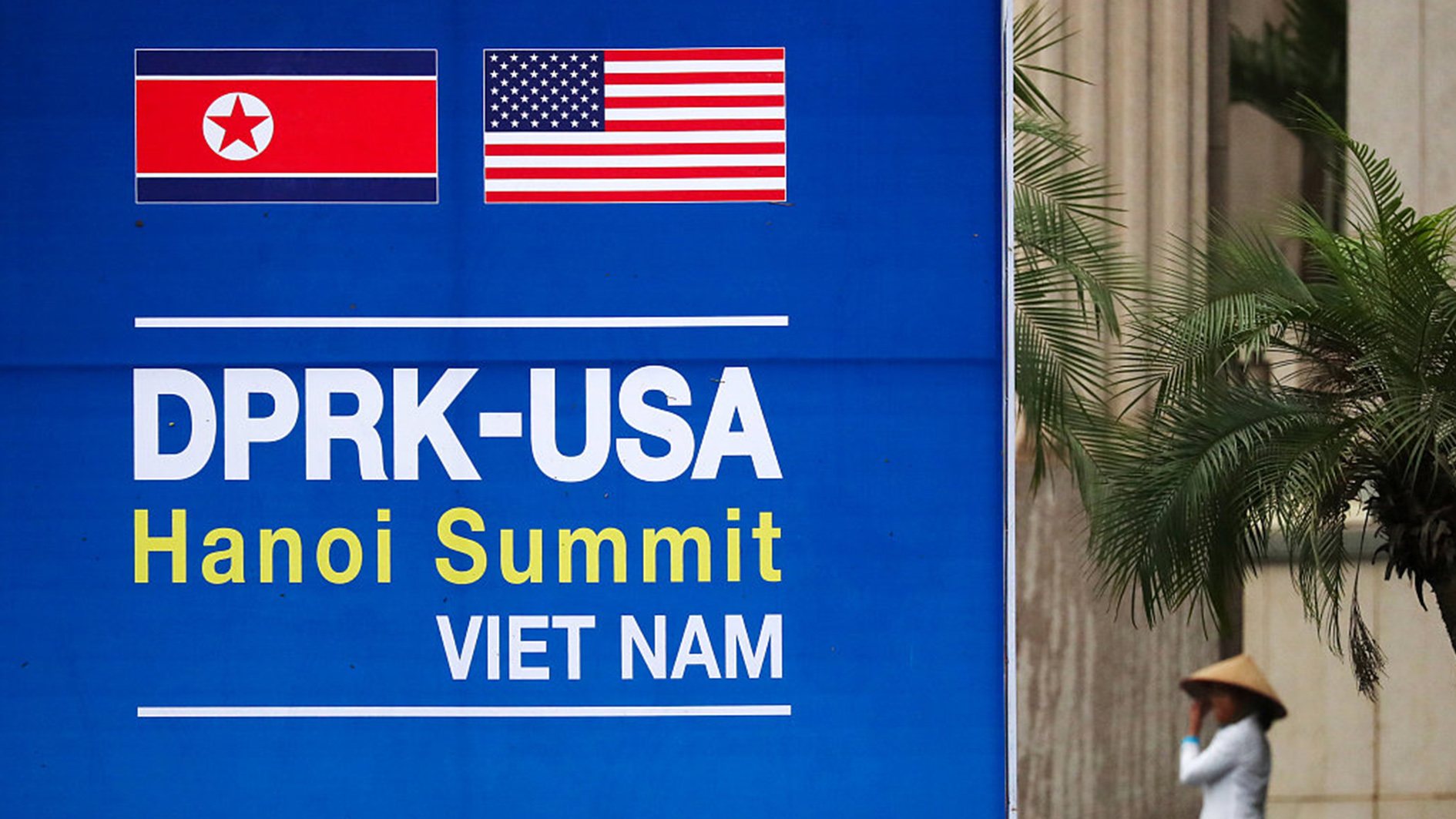
Talks and results
Singapore summit:
The first Trump-Kim summit took place at Capella Hotel on Singapore's Sentosa Island on June 12, 2018. The summit included a one-on-one meeting between Trump and Kim, an expanded bilateral meeting and a working lunch between U.S. and DPRK delegations, and a joint signing ceremony.
The lunch featured Korean, Southeast Asian and Western delicacies.
At the end of the summit, Trump and Kim signed a
four-point joint statement:
1. The U.S. and the DPRK commit to establish new U.S.-DPRK relations in accordance with the desire of the peoples of the two countries for peace and prosperity.
2. The U.S. and the DPRK will join their efforts to build a lasting and stable peace regime on the Korean Peninsula.
3. Reaffirming the April 27, 2018 Panmunjom Declaration, the DPRK commits to work toward the complete denuclearization of the Korean Peninsula.
4. The U.S. and the DPRK commit to recovering POW/MIA remains including the immediate repatriation of those already identified.
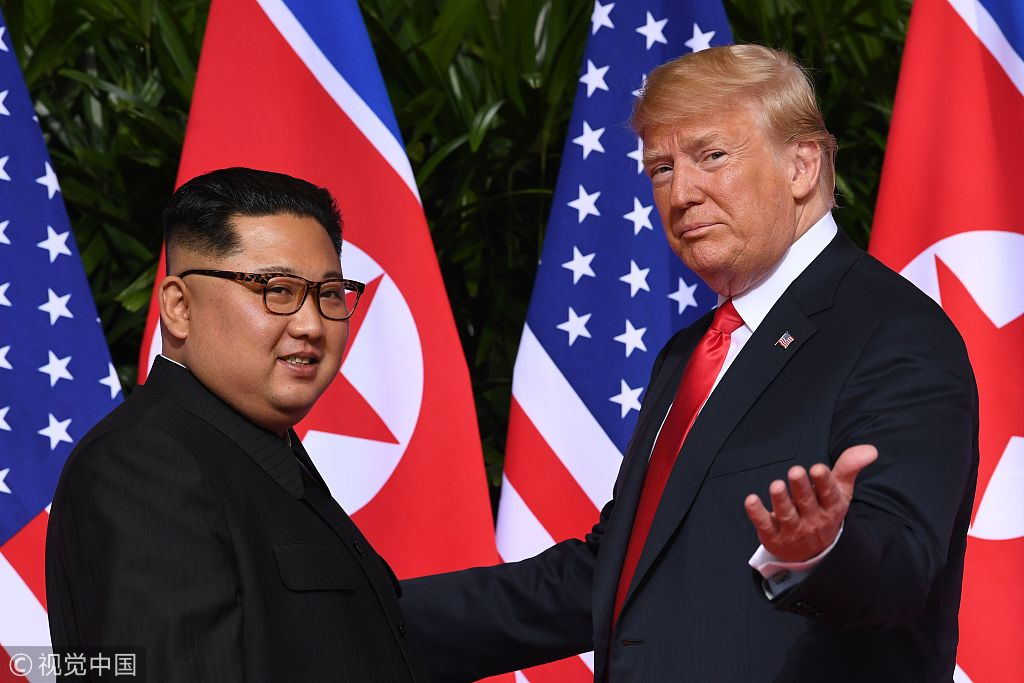
U.S. President Donald Trump (R) meets with DPRK leader Kim Jong Un at the start of their summit at Capella Hotel on Sentosa Island in Singapore, June 12, 2018. /VCG Photo
U.S. President Donald Trump (R) meets with DPRK leader Kim Jong Un at the start of their summit at Capella Hotel on Sentosa Island in Singapore, June 12, 2018. /VCG Photo
Read more:
Hanoi summit:
What will be the precise venue of the summit?
Reuters reported that Trump and Kim could meet at the Government Guesthouse, a colonial-era government building in central Hanoi. The Metropole Hotel nearby will be a backup location. But the reports have not been confirmed yet.
Read more:
In Hanoi, the two leaders will have a one-on-one meeting before holding meetings with their respective teams, a U.S. official said on Thursday, noting that the summit will be "similar in format to what we saw last June in Singapore."
Will the talks achieve tangible results on denuclearization and sanctions? Can Trump and Kim agree on the terms to declare an end to the 1950-53 Korean War? What concessions are the two sides willing to make?
And what dishes will be on the menu?










